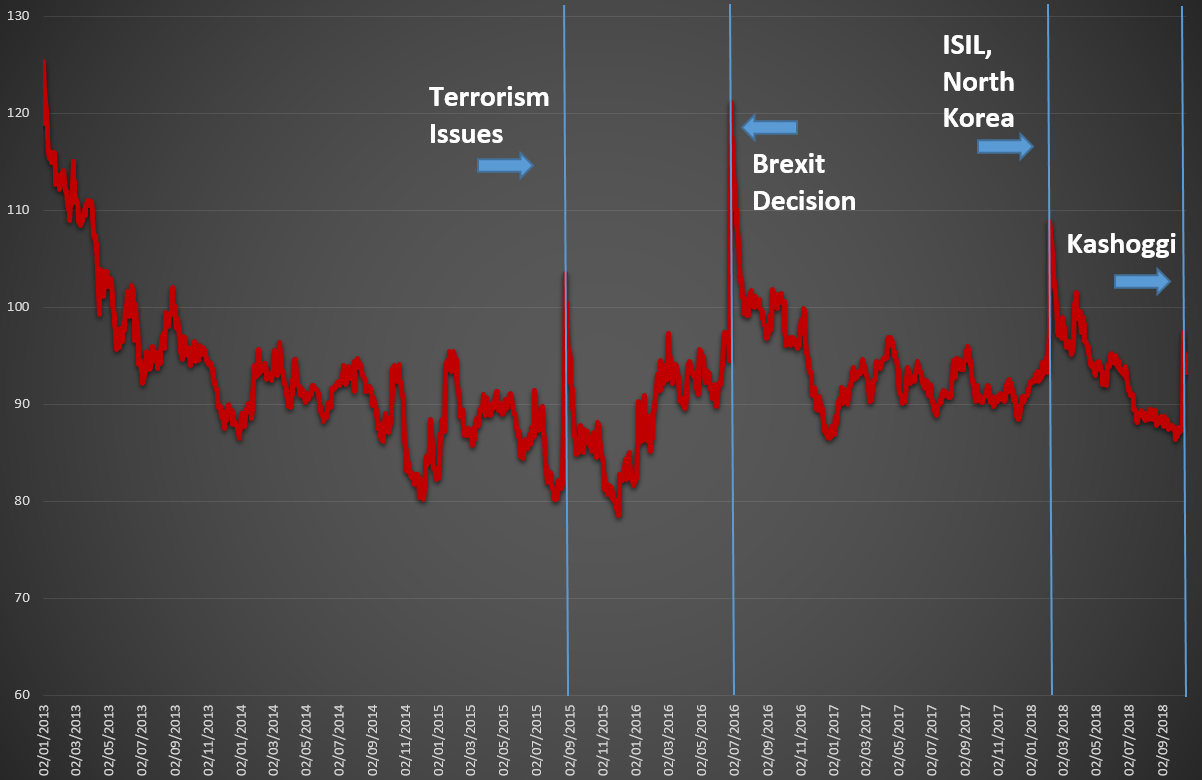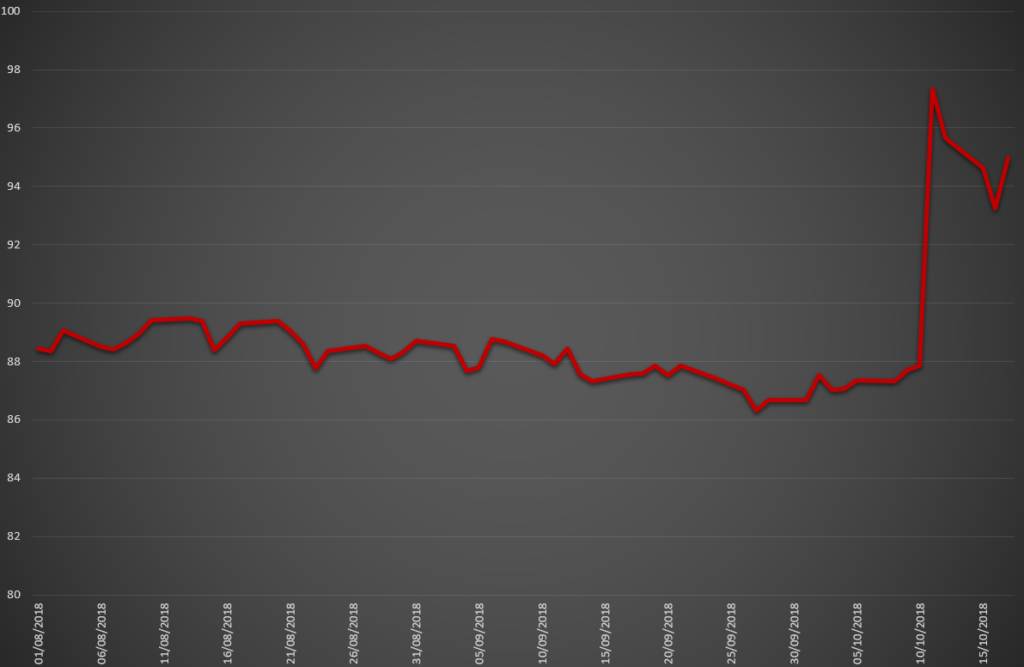In general, Risk Aversion refers to the investors’ willingness to accept riskier investments. For example, when investors are willing to invest only in bonds and not in the stock market, then we would say that we are facing a high Risk Aversion situation. In contrast, when investors are more willing to invest in the stock market than they are to purchase bonds we are in a low Risk Aversion situation. Risk aversion (and its opposite, risk appetite) is frequently cited as a factor explaining price movements in various financial markets. Note that Risk Aversion in the above scenarios refers to the aggregate behaviour of investors and not to a specific investor.
Defining the prevailing extent of Risk Aversion is important for investors: a high Risk Aversion translates into a higher cost of capital, given that banks and businessmen are not willing to lend, something which can potentially have a negative effect on business investment. In contrast, a low Risk Aversion can lead to booms in credit and asset prices, and even perhaps suggest that recessions will eventually come as the economy is stressed. For example, the aftermath of the late-2000s financial crisis showed systemic changes in investors’ appetite for risk.
Why should we care then? The idea is straightforward: understanding Risk Aversion means that we understand how the market is feeling on that particular day, week, or month. By understanding how the market is “feeling” we are able to better construct our strategies to fit the overall market sentiment. For example, it could likely be the case that in periods when Risk Aversion is low, positive news may lead to “overreactions” while negative news may lead to “underreactions”. The opposite would hold in the case where Risk Aversion is high. In addition, it is often the case that different types of assets benefit when Risk Aversion is high than when it is low.
In today’s post, HotForex offers an insight to the market’s appetite for risk, by providing an innovative FX Risk Aversion Index (FX-RAI). The Index is specifically designed to aid traders in understanding what the prevailing FX market sentiment is. As far as we know, there currently exists no other specific Risk Aversion Index in the Forex industry and this is the first to be addressed to a wide audience. For interested readers, I soon intend to publish a longer post detailing how the index has been constructed. A question which may arise is why not just observe market behaviour. The reason is that the FX-RAI index uses more than one indicator and its main purpose is to fit in with fundamental analysis regardless of whether economic data are released or not. In essence, the FX-RAI aims at capturing market sentiment, which is many times unrelated to real economic developments. Thus, the Index should serve as a complementary tool to analysing the current state of the market.
The FX-RAI, as presented in the Chart above, is constructed in such a way that Risk Aversion is balanced when the Index value stands close to 100. Anything above 100 suggests that Risk Aversion is high, while anything below 100 suggests that Risk Aversion is low. To begin with, the Index starts in a high Risk Aversion environment in early 2013, which has been slowly decreasing in the following years. In 2014, the Index fluctuated around 90, suggesting that Risk Aversion was mildly low, while it increased sharply on terrorism news in 2015. The most important event which triggered Risk Aversion was Brexit, pushing the Index to 120 in late June and early July 2016. Values above 100 persisted until early 2017, whereby the index stabilized slightly higher than 90 again suggesting that Risk Aversion was slightly lower. Tensions in North Korea and ISIL attacks forced the index to rise above 100 again in early 2018. The index was on a declining trend since then, dropping to below 90 early this summer, however the recent Kashoggi incident increased Risk Aversion closer to 100.
To provide a better view of the recent developments in the FX-RAI, the Chart above presents the path of the Index as of August 2018. Overall, the narrow downwards trend can be observed, starting from approximately 89 and reaching almost 86, before jumping all the way to 97 over the Kashoggi incident. Since then, Risk Aversion has remained at mildly lower levels, at about 95. Naturally, if tensions continue to rise, then the FX-RAI should proceed to increase as investors will seek to purchase safer goods. In contrast, since we expect tensions to ease, especially after Saudi Arabia has suggested that it will investigate the issue, the FX-RAI is likely to return to lower levels.
The next update, coming up next Wednesday, should provide more insight to this. In addition, a webinar where we shall provide more detail on how the FX-RAI is constructed how it should be interpreted will also take place soon.
Click here to access the HotForex Economic calendar.
Want to learn to trade and analyse the markets? Join our webinars and get analysis and trading ideas combined with better understanding on how markets work. Click HERE to register for FREE! The next webinar will start in:
[ujicountdown id=”Next Webinar” expire=”2018/10/23 14:00″ hide=”true” url=”” subscr=”” recurring=”” rectype=”second” repeats=””]
Dr Nektarios Michail
Market Analyst
HotForex
Disclaimer: This material is provided as a general marketing communication for information purposes only and does not constitute an independent investment research. Nothing in this communication contains, or should be considered as containing, an investment advice or an investment recommendation or a solicitation for the purpose of buying or selling of any financial instrument. All information provided is gathered from reputable sources and any information containing an indication of past performance is not a guarantee or reliable indicator of future performance. Users acknowledge that any investment in FX and CFDs products is characterized by a certain degree of uncertainty and that any investment of this nature involves a high level of risk for which the users are solely responsible and liable. We assume no liability for any loss arising from any investment made based on the information provided in this communication. This communication must not be reproduced or further distributed without our prior written permission.




















